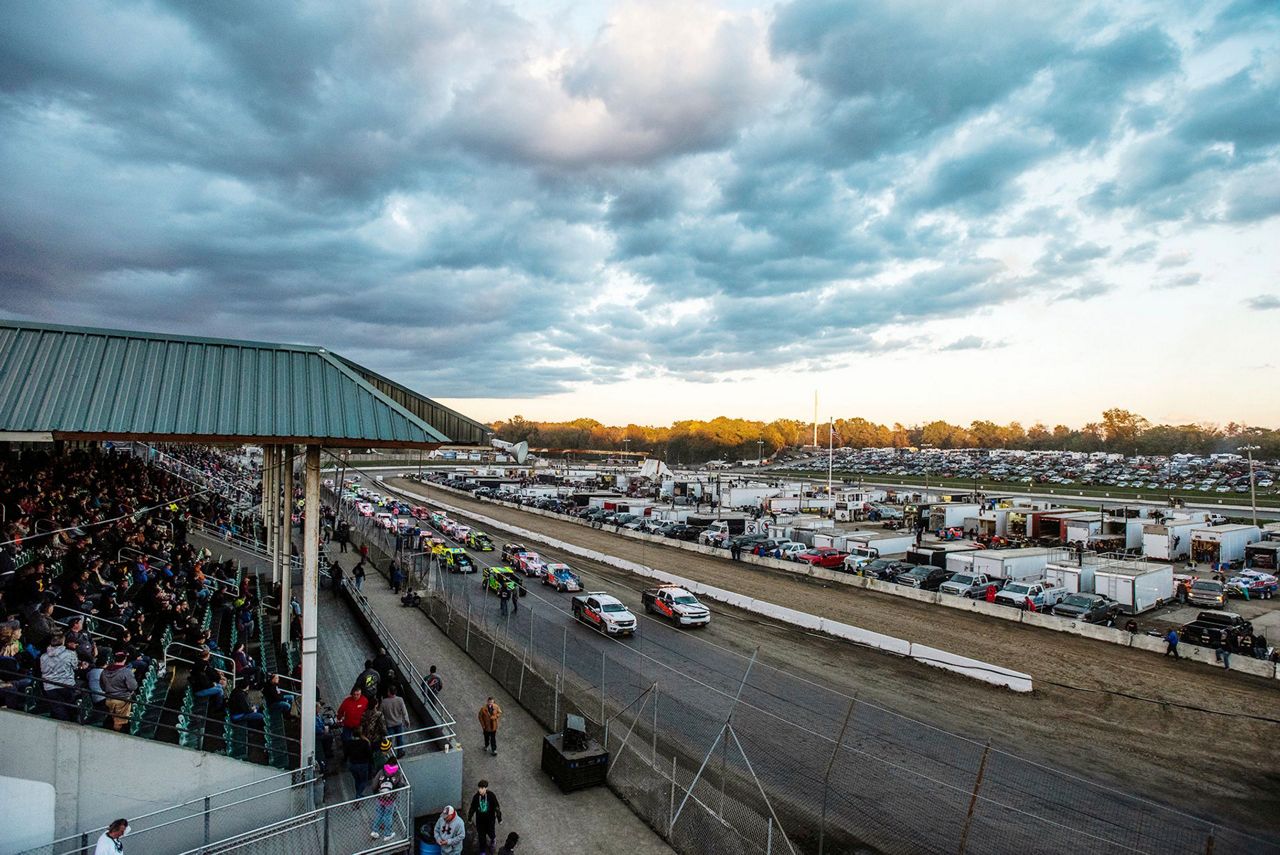MIDDLETOWN, N.Y. (AP) — Brett Hearn won't forget his first race at Orange County Fair Speedway. Hey, when you're a 16-year-old junior in high school, it has to be etched in the memory, even if it was in 1975.
"I'd never shifted a shift car before with a clutch," Hearn recalled this week. "I went out on the racetrack basically learning how to shift the car. I'm not sure how many laps I made, just a handful. I went down the back straightaway at full throttle, got to Turn 3 and the car kind of got a little push.
"I kind of panicked and locked the brakes down. I went into the wall and that was the end of my first night."
An inauspicious beginning to what has become a remarkable career. Hearn, about to turn 62, has more than 900 career wins, a third of them in modifieds at the old clay track, which turned 100 years old on Thursday and is the oldest, continuously operated dirt track in the country.
"It's the first track that I went to when I was eight years old and the first time I was exposed to any kind of car racing," said Hearn, a New Jersey native. "Ultimately, from that experience it led our family into racing.
"Anytime you go into an old fairgrounds with that much history it's kind of a special kind of place. This is where I learned how to race. It's still the closest track to my house. To see the revival that's taken place there the last couple of years is pretty amazing."
The original layout was built in 1857 as a half-mile horse track — the Harry Clay Oval — about 20 miles west of the Hudson River in southeastern New York. In 1913, fair director George Martin, a car enthusiast, began lobbying to bring in auto racing. It took him six years to convince the board and on Aug. 15, 1919, the inaugural race featured 10 cars and attracted a crowd of around 5,000. Jim Benedict won it in his Duesenberg Special, which is still around today.
The track was lengthened to its current distance, 5/8 of a mile, and in 1924 a unique form of clay was trucked in from a pond in nearby Goshen. Annual races were held and regularly attracted 25,000, and after a hiatus for World War II, the stock car was born and the track flourished. It attracted some of the all-time greats, Al Unser, Mario Andretti, and Bobby Allison among them, and capacity crowds.
"If you wanted a seat in the grandstand back then, you had to go Friday night and go put a blanket on the seat," former track photographer Bob Perran said in a video produced for the 100th anniversary. "Then you'd come in on Saturday and the blanket would be there and nobody would take it."
In 1962, Orange County Fair Speedway began the Eastern States 100 (now the 200) and it quickly became one of the signature events of dirt modified racing in the Northeast. Buzzie Reutiman won it the first time he went north from Florida in 1965. Gary Balough, one of the great innovators of modified racing, in 1977 won the first Eastern States he competed in and led flag to flag, the only driver to accomplish the feat.
"I think the No. 1 thing that makes the track so special is the history and the nostalgia component of it," said Chris Larsen of Orange Motorsports and Entertainment, which leases the track and has an option to buy it. "You feel like you're at the Brickyard. There's 100 years of history there. When you're there, you just kind of reminisce about races you've seen 30, 40 years ago.
"If you're a fan of dirt-track racing, every top driver of all time has raced there. It oozes the type of nostalgia similar to NASCAR's Darlington. We're the Darlington of dirt track racing."
To be sure, the track has character and has had more than its share of characters.
If you went off the back straightaway, that's where they threw the beer cans when they cleaned up the place. They called one car the "Beer Can Special" because it always ended up there. Light poles were knocked down and the starter had to be nimble because his stand was on the track. He'd have to run out, wave the flag, then run back behind a wooden fence.
Hearn wasn't old enough to drink in 1975, but for drivers and fans The 31st Lap Tavern was open for business for the first time. It became the place to be after the races, and still is.
"That really is all part of the tradition," Larsen said. "It's a comfortable place where fans can come and enjoy a beer and talk to each other and just hang out. Drivers will come out of the pits and just hang out with the fans. It's really a unique environment, especially today."
Weekly stock car racing began April 16, 1950, and has continued every week since. This week's celebration culminates with a $100,000 purse going to the victor in Saturday night's centennial race.
Reutiman, now 78 and still driving and winning in Florida, will be there, but just to watch, maybe even at the tavern.
"I can visit with the guys and rehash some of the old stories," Reutiman said. "That's one of the reasons I enjoy coming back up to Middletown. I get to see everybody and the track. It brings back a lot of memories."
___
More AP auto racing: https://apnews.com/apf-AutoRacing and https://twitter.com/AP_Sports
Copyright 2019 The Associated Press. All rights reserved. This material may not be published, broadcast, rewritten or redistributed.



